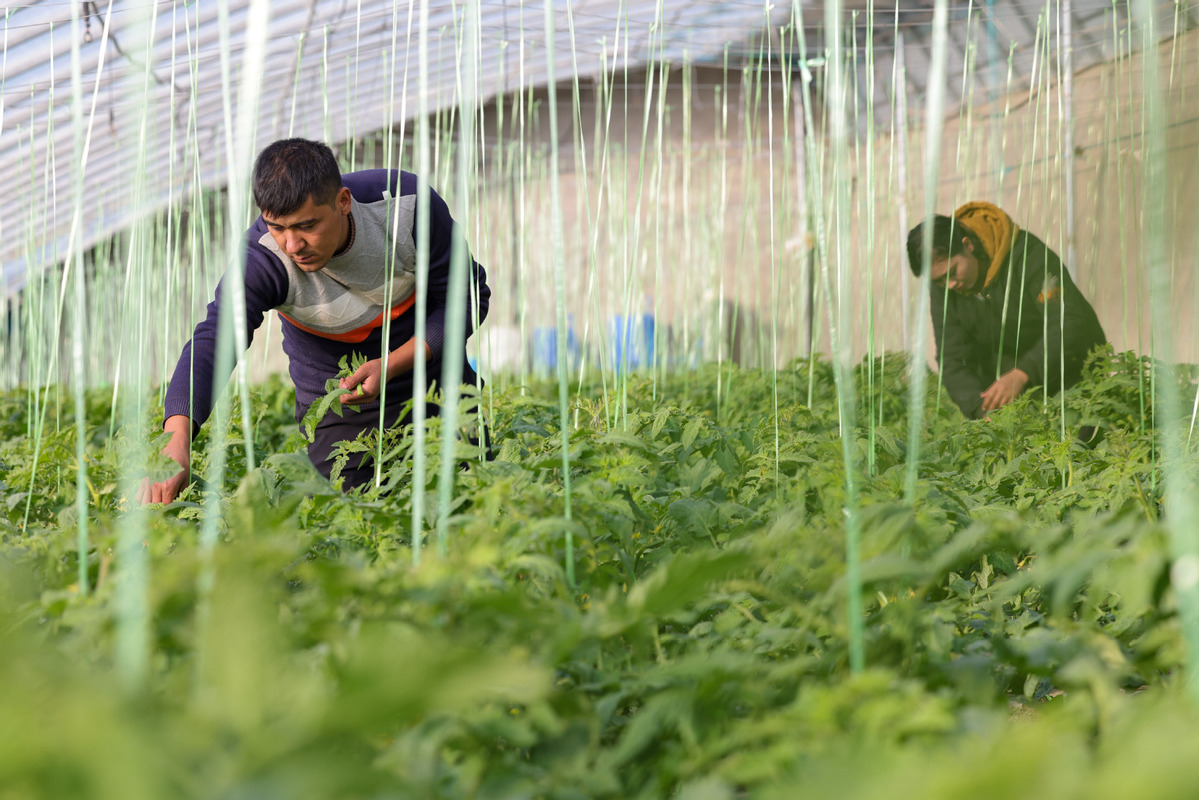
Farmers work in a greenhouse at an agricultural industrial park in Shache county, Xinjiang Uygur autonomous region, on Dec 13, 2021. [Photo/Xinhua]
On the rim of China's largest desert, the Taklimakan, the remote Lop Nur area was once barren and lifeless. Now, thanks to the production of water-soluble potassium fertilizer, it is beginning to come to life.
A fertilizer production line, designed to meet the irrigation needs of modern agriculture, is undergoing a test run at the largely dried-up lake located in northwestern China, which is known as the "sea of death" due to its high salt content.
Potassium is vital to crop growth but traditional potash products were not suitable for use in drip irrigation due to the coarseness of their particles. The new water-soluble fertilizer from Lop Nur, however, is more easily absorbed by the soil.
A research and development group from SDIC Xinjiang Luobupo Potash, the developer of the production line, visited farmers to learn about their needs and then built a plant with an annual output of 1.5 million metric tons of potassium sulfate and 100,000 tons of potassium sulfate magnesium fertilizers.
Sold under the Luobupo brand, the potassium fertilizer has won users' trust, according to the Science and Technology Daily newspaper.
By September, more than 18 million tons of potassium fertilizer had been produced at Lop Nur, accounting for about 45 percent of the domestic market share.
According to the newspaper, 70 percent of the potassium fertilizers used in China were imported until at the end of the 1990s, geologists discovered the world's largest deposits of sulfate potassium brine at Lop Nur.
In 2012, a potassium fertilizer project initially capable of producing 1.2 million tons a year was put into operation.
Due to its geological, geographical and historical value, the dried-up lake has attracted the attention of scientists at home and abroad since the mid-19th century.
For more than 200 days a year, Lop Nur experiences winds gusting to level seven or above.
The annual precipitation is just 39 millimeters, while the evaporation rate is in excess of 4,800 mm. According to the newspaper, foreign advisers who were brought in to explore the possibility of producing potassium sulfate believed it was not possible due to the lack of readily available water.
However, the SDIC Xinjiang Luobupo Potash research group chose to use brackish water from the edge of the desert in place of fresh water and were able to reduce the amount of water needed to produce 1 ton of potassium sulfate to one-third of the amount used by traditional processes.
The company has registered 71 research patents in salt lake potassium resources and other elements in Lop Nur and has promised to invest more in research to promote sci-tech innovation and transformation.
"We will also start making more products that benefit farmers," said Li Shoujiang, general manager of SDIC Xinjiang Luobupo Potash.
Alongside the production line, railway projects, power plants and water supply projects have been built in Lop Nur, which are helping to transform the former "sea of death" into a "sea of fortune".








